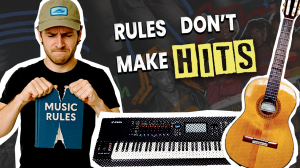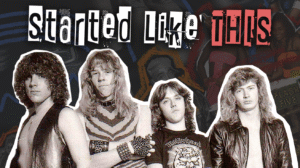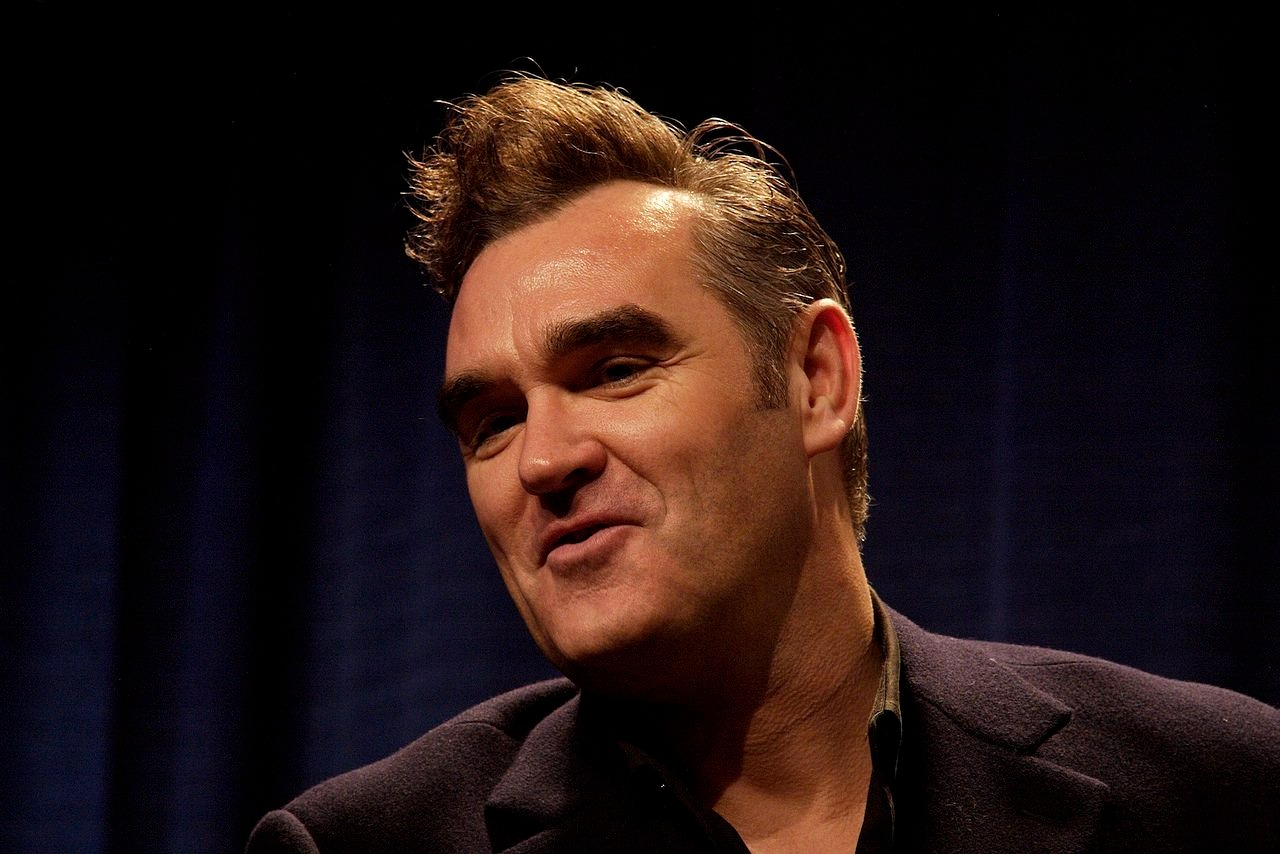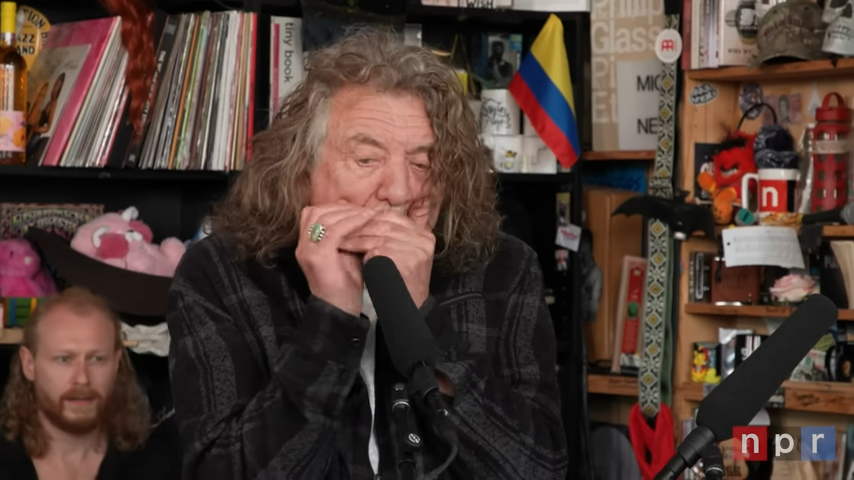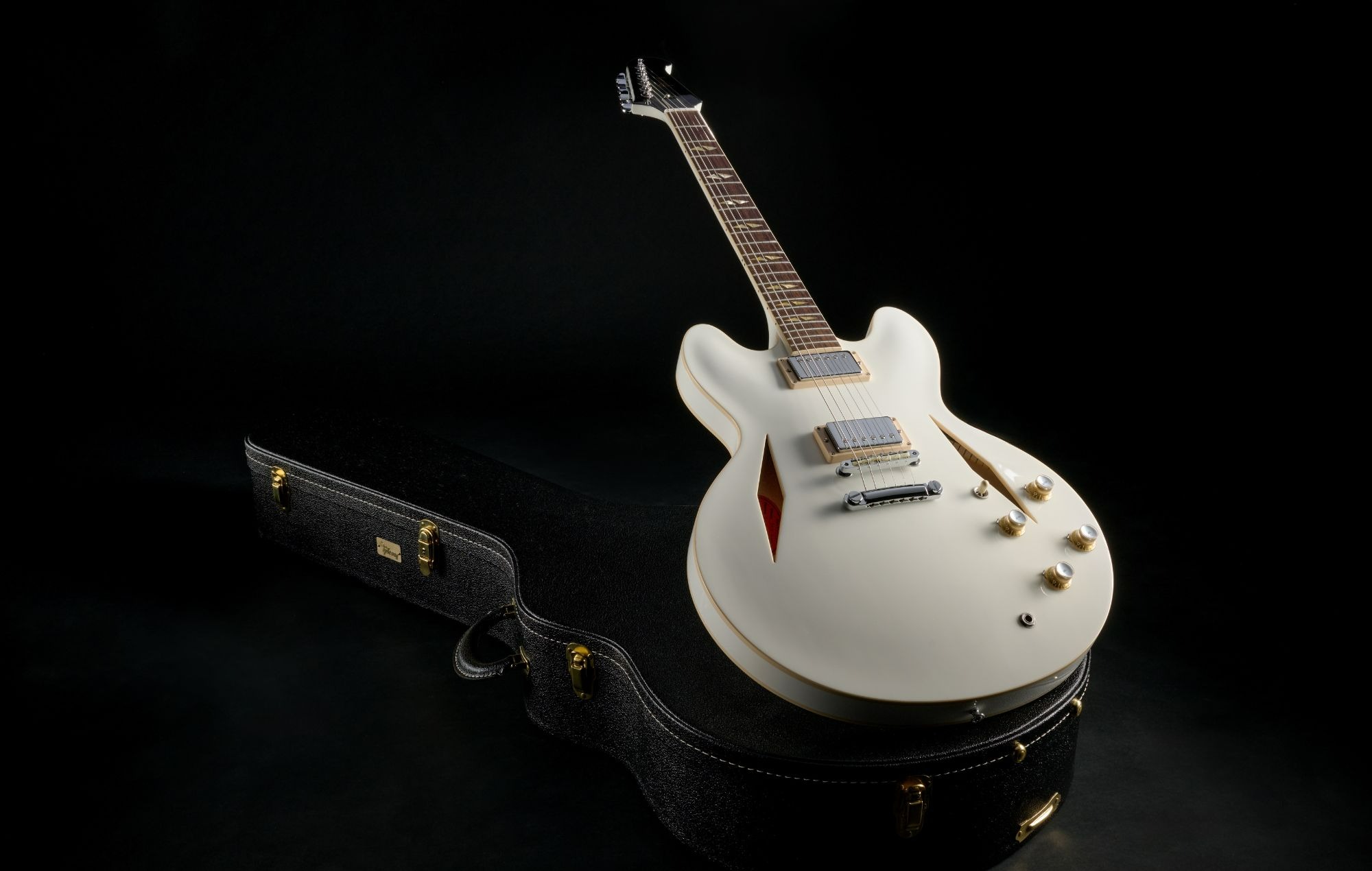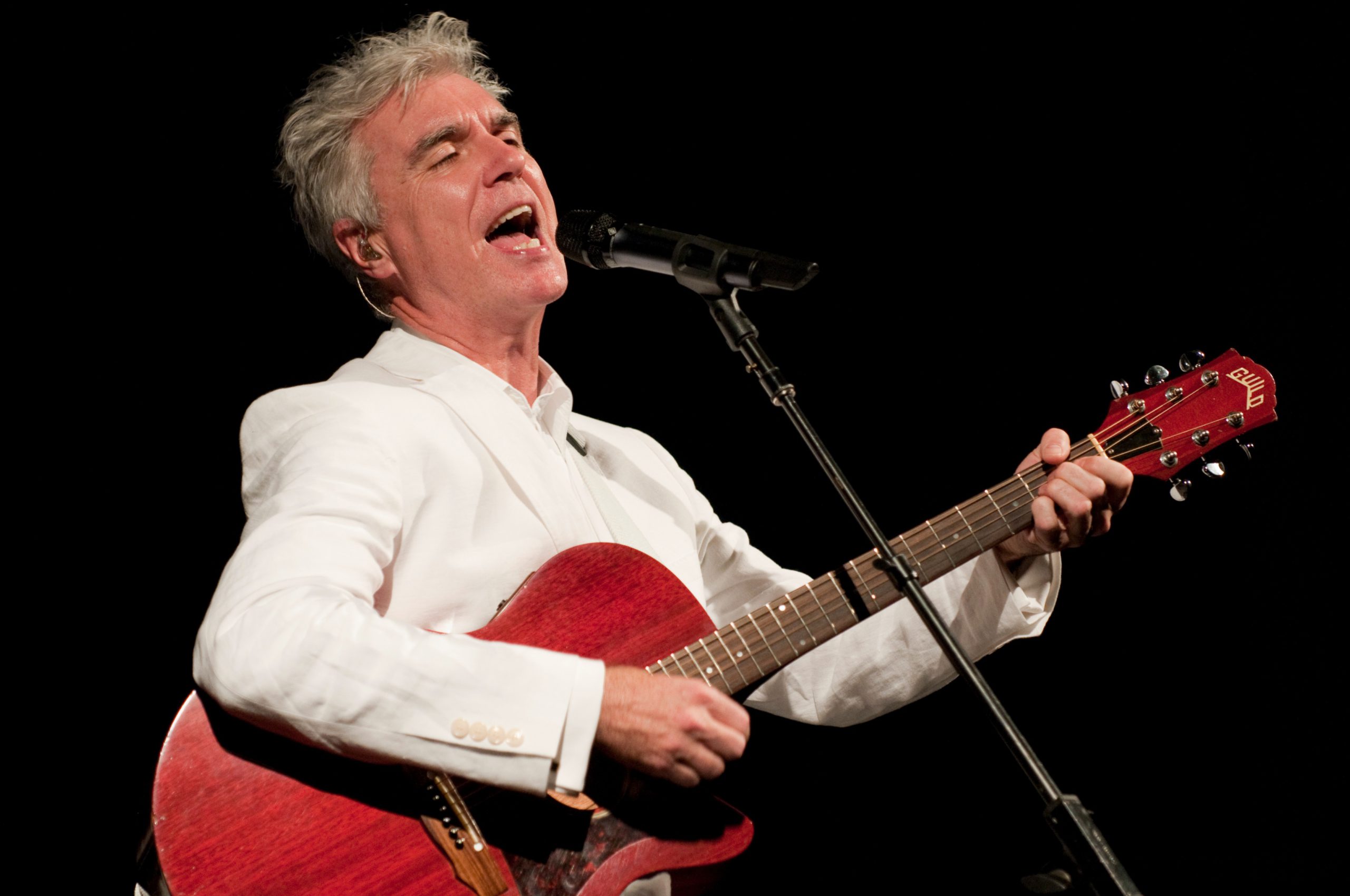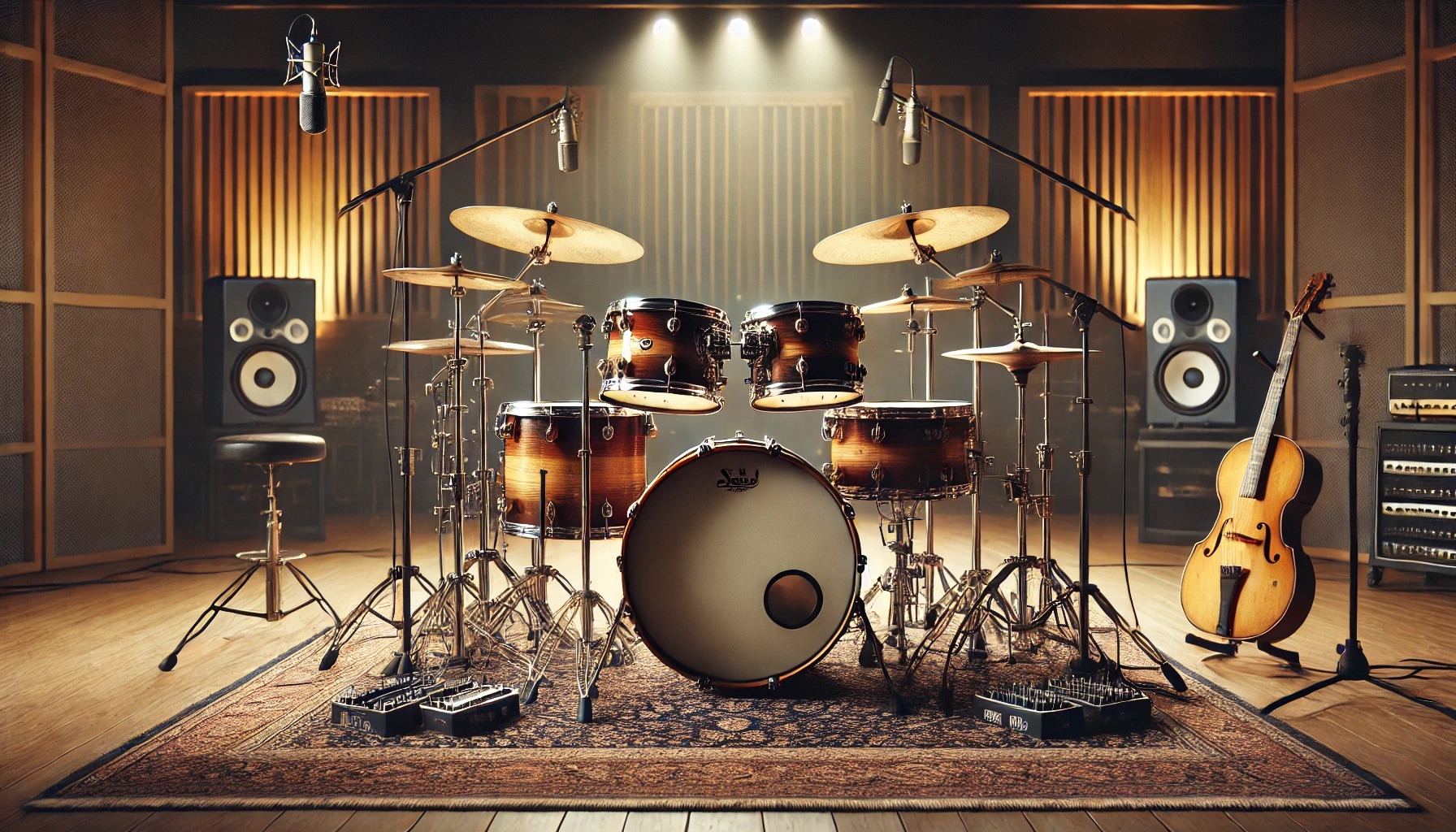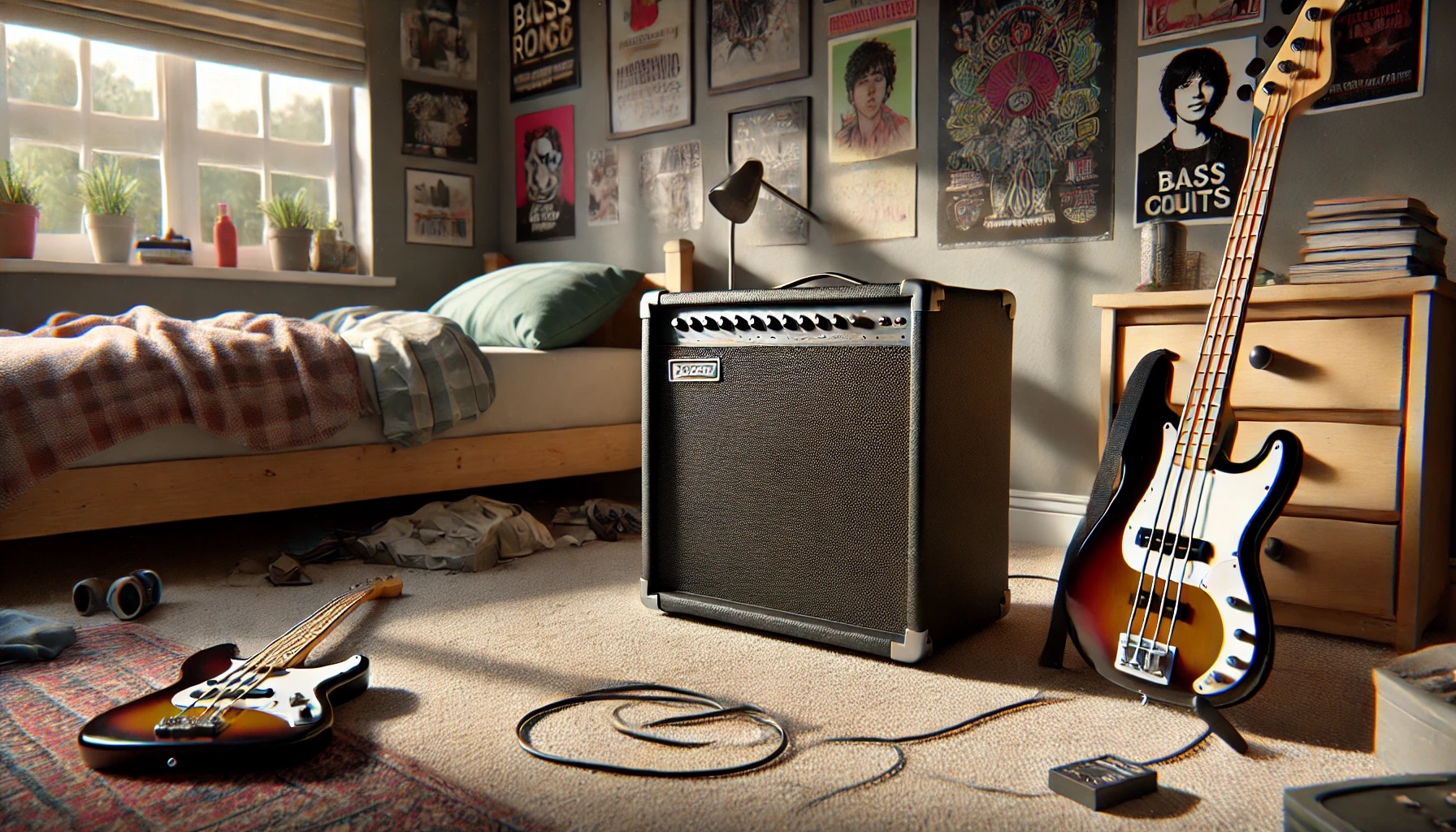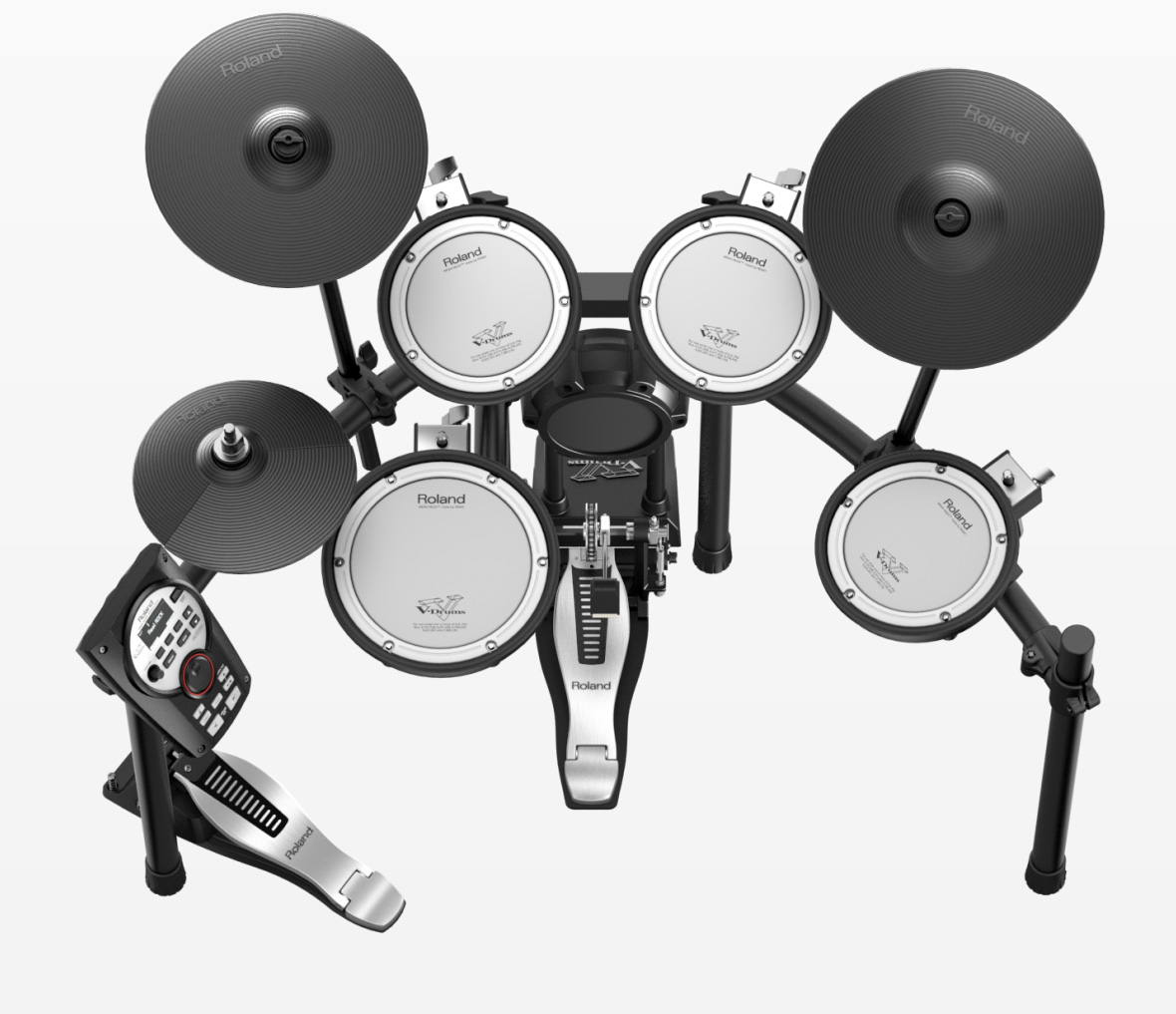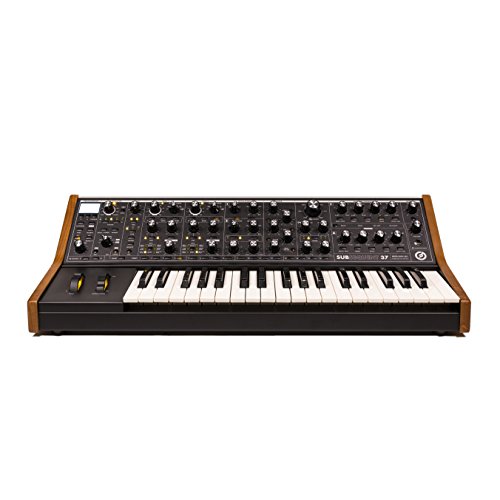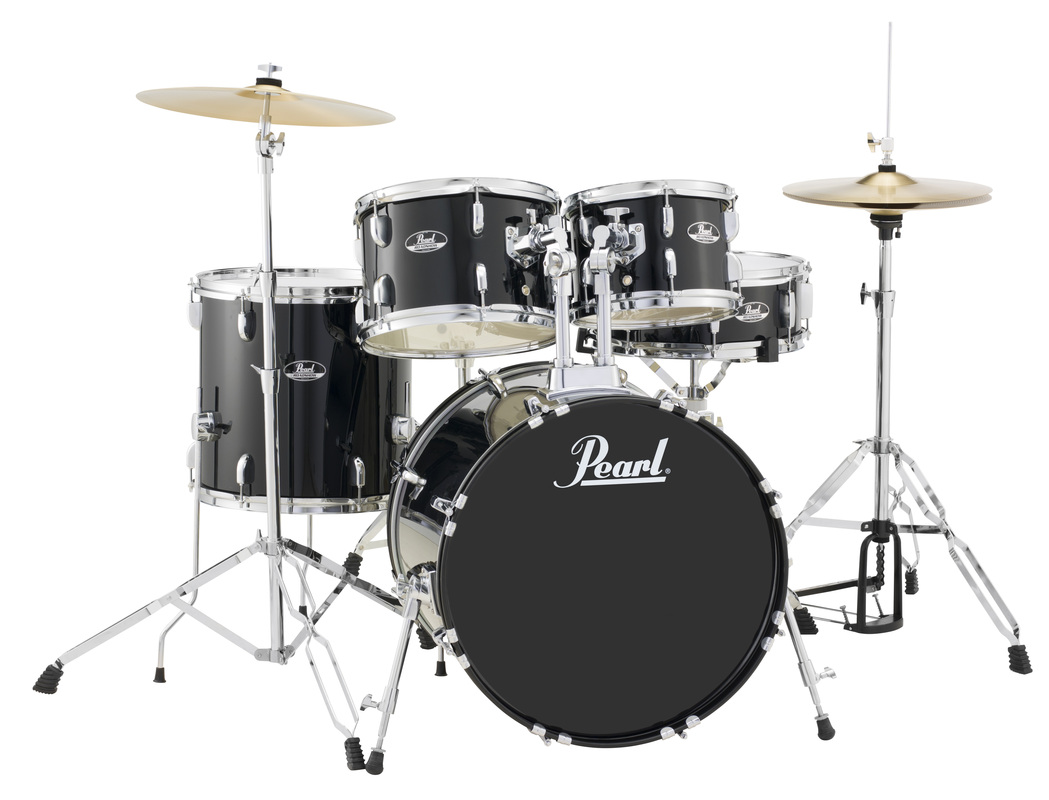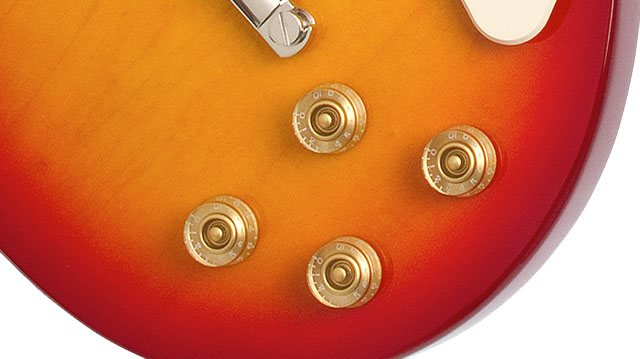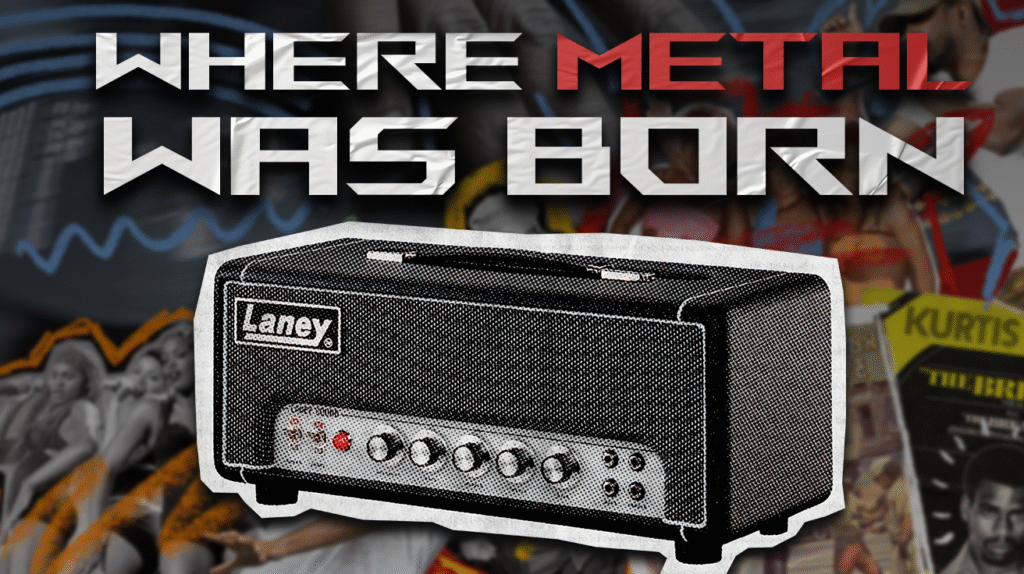
Choosing the right amplifier can make or break your metal tone. Whether you’re chasing vintage Sabbath darkness or modern high-gain precision, the amplifier sitting behind your guitar shapes everything from bedroom practice sessions to stadium-shaking performances. These ten legendary heads and combos represent the sonic DNA of heavy music, each contributing its own signature to metal’s evolution across five decades.
10. Laney Supergroup and AOR Series
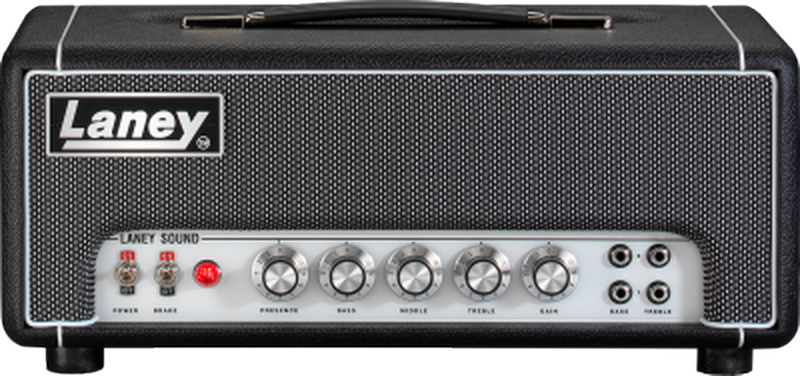
The garage-built foundation that gave birth to metal itself.
Few amplifiers can claim they literally helped invent a genre. The Laney Supergroup, hand-built in Lyndon Laney’s West Midlands garage during the late 1960s, earned that distinction when Tony Iommi plugged his Gibson SG into one for Black Sabbath’s groundbreaking 1970 debut album. That dark, crushing tone became the sonic template for every metal band that followed.
The real game-changer arrived in 1978 with the AOR series. While other guitarists paid technicians to modify their amps for higher gain, Laney delivered boutique-level distortion straight from the factory. Four preamp tubes instead of the usual three meant instant access to the saturated tones that defined hair metal’s golden era. Artists like Vinnie Moore, Twisted Sister’s Eddie Ojeda, and Dokken’s George Lynch adopted the AOR as their weapon of choice.
Today’s LA-STUDIO model shrinks that vintage magic into a 3-watt tube head with Two Notes Torpedo impulse response technology—essentially a “real plugin” that bridges authentic tube saturation with modern recording convenience. For budget-conscious players, the Mini-SuperG practice amp delivers Supergroup-inspired tone in a portable, battery-powered package starting around $84.
9. Marshall JCM800
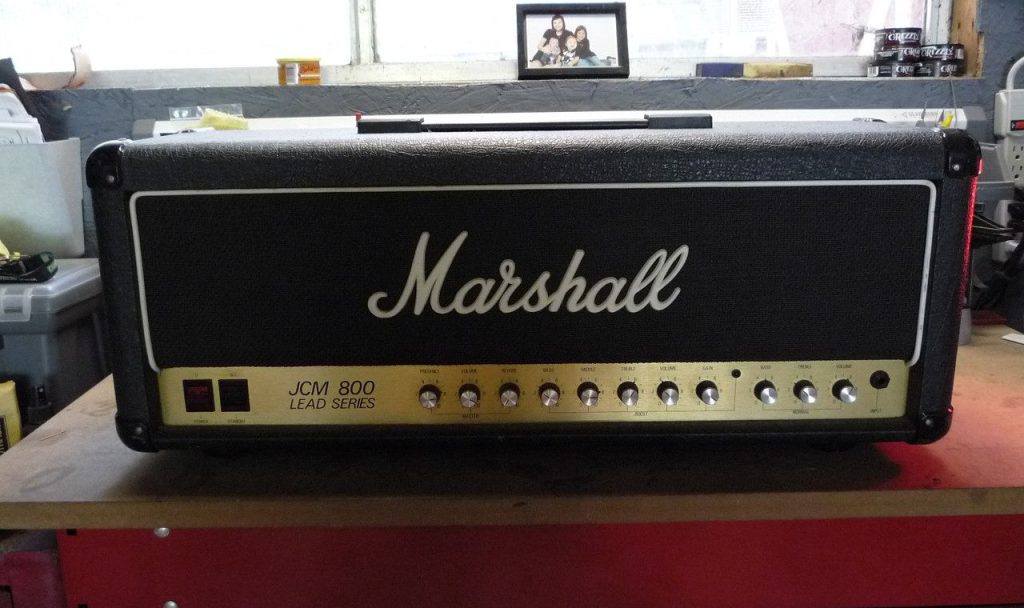
The roar that defined the ’80s metal explosion.
The Marshall JCM800’s revolutionary approach to gain staging changed everything. Released in 1981, its separate preamp volume and master volume controls finally allowed high-gain tones at manageable volumes—perfect for studio work and smaller venues. That signature midrange bite cut through mix-heavy productions like a chainsaw through plywood.
Zakk Wylde’s work with Ozzy Osbourne and Kerry King’s razor-sharp Slayer riffs both relied heavily on JCM800 aggression. The amplifier’s natural compression and sustain characteristics made it ideal for palm-muted chugging and soaring leads alike. Judas Priest’s “Screaming for Vengeance” showcased the JCM800’s ability to deliver both crushing rhythm work and piercing melodic lines.
Modern reissues maintain the original’s EL34-powered fury while addressing reliability issues that plagued vintage models. Anyone who’s heard that unmistakable growl knows exactly what separates a good metal tone from an iconic one.
8. Mesa Boogie Mark IIC+
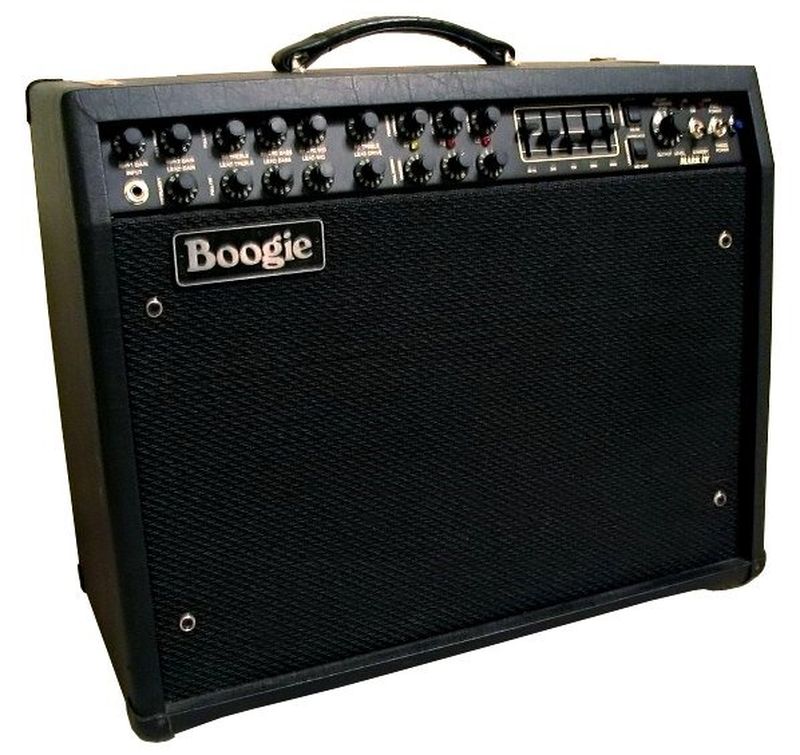
The holy grail that powered thrash metal’s defining moments.
Produced for barely two years (1984-1985), the Mark IIC+ achieved legendary status through one album: Metallica’s “Master of Puppets.” James Hetfield’s precise, articulate rhythm guitar work and Kirk Hammett’s singing lead tones established the IIC+ as the standard for technical metal playing. The amplifier’s complex preamp design delivered surgical precision without sacrificing the warmth that kept solos musical rather than sterile.
The Mark IIC+ proved that extreme gain didn’t require sacrificing note definition. Its cascading gain stages and graphic EQ allowed players to sculpt tones ranging from crystalline cleans to face-melting distortion. The amplifier’s natural compression characteristics made fast alternate picking feel effortless while maintaining clarity even in dropped tunings.
Original Mark IIC+ amplifiers command astronomical prices on the vintage market, often exceeding $8,000 for pristine examples. Mesa’s modern Mark series attempts to capture that magic, but most players agree nothing quite matches the original’s mystical combination of components and craftsmanship.
7. Mesa Boogie Dual Rectifier

The bass-heavy beast that conquered the ’90s alternative metal scene.
When grunge gave way to nu-metal’s downtuned brutality, the Dual Rectifier provided the perfect sonic foundation. Its three-channel design and tube rectification options delivered the raw, aggressive, bass-heavy tones that made seven-string guitars and dropped tunings sound absolutely massive. The “Recti-fire” became synonymous with bands like Tool, Korn, and later metalcore pioneers.
The amplifier’s scooped midrange profile and extended low-end response perfectly complemented the palm-muted chugging that defined mid-‘90s metal. Unlike the surgical precision of the Mark series, Dual Rectifiers embraced controlled chaos—loose, organic, and utterly crushing. That slightly flubby low-end response that traditionalists criticized became the defining characteristic of an entire generation’s metal sound.
Modern iterations maintain that signature chunk while addressing early models’ reliability issues and adding contemporary features like MIDI switching. The Dual Rectifier proved that sometimes the most musical approach involves embracing an amplifier’s quirks rather than fighting them.
6. Soldano SLO-100
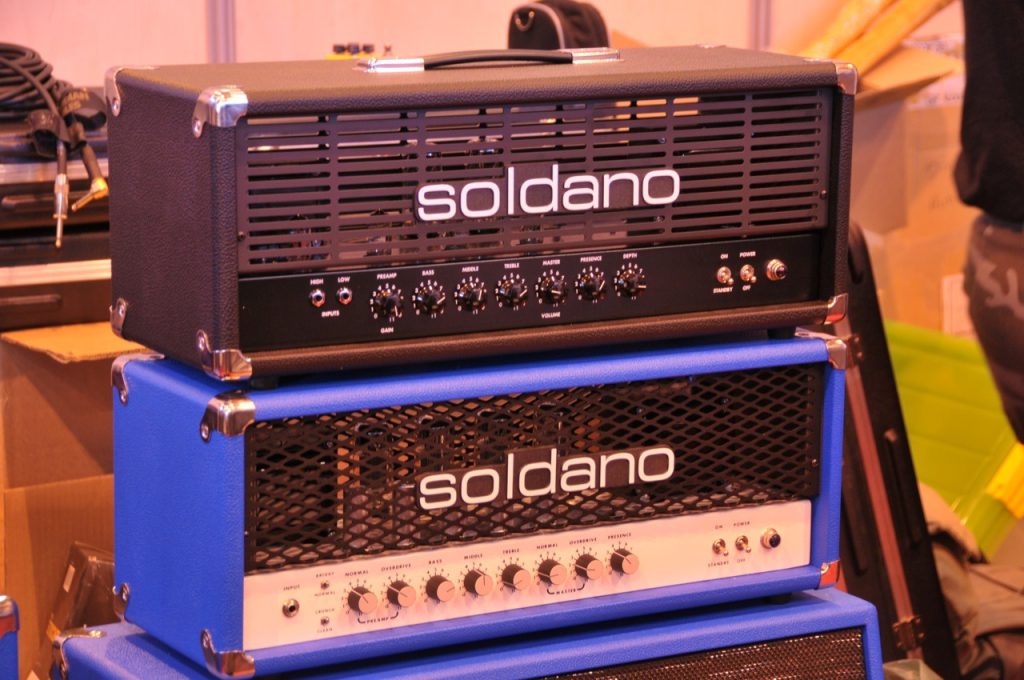
The boutique monster that redefined high-gain possibilities.
Mike Soldano’s SLO-100 raised the bar for what high-gain amplification could achieve. Built entirely by hand in small quantities, the SLO combined Marshall-style midrange bite with modern gain levels that seemed impossible from a purely analog circuit. The amplifier’s singing sustain and musical overdrive characteristics made it the weapon of choice for virtuoso players.
The SLO’s influence extends far beyond its limited production numbers. Countless modern amplifier designs borrow elements from Soldano’s circuit innovations, particularly the cascading gain structure that maintains clarity even at extreme settings. The amplifier’s natural tube compression and harmonic complexity inspired an entire generation of boutique builders.
At over $4,000 new, the SLO-100 occupies premium territory, but its tone and build quality justify the investment for serious players. The waiting list for new models often stretches months, testament to the amplifier’s cult status among discriminating guitarists who refuse to compromise on tone quality.
5. Diezel VH4

German engineering meets crushing metal precision.
Peter Diezel’s VH4 represents the pinnacle of modern high-gain design. Four independent channels provide everything from pristine cleans to face-melting distortion, each with its own EQ and gain structure. The amplifier’s German engineering heritage shows in every detail, from military-grade construction to the surgical precision of its tone controls.
The VH4’s third and fourth channels deliver the kind of saturated, articulate distortion that makes complex chord progressions sound massive while keeping individual notes clearly defined. Bands like Tool and Meshuggah rely on the VH4’s ability to handle intricate rhythmic patterns without turning into sonic mush.
Channel switching via MIDI makes the VH4 ideal for modern metal’s dynamic arrangements. The amplifier’s built-in effects loop and comprehensive routing options address every connectivity need without requiring external switching systems. At approximately $4,500, the VH4 costs serious money, but its versatility and reliability make it a lifetime investment.
4. Peavey 5150/6505
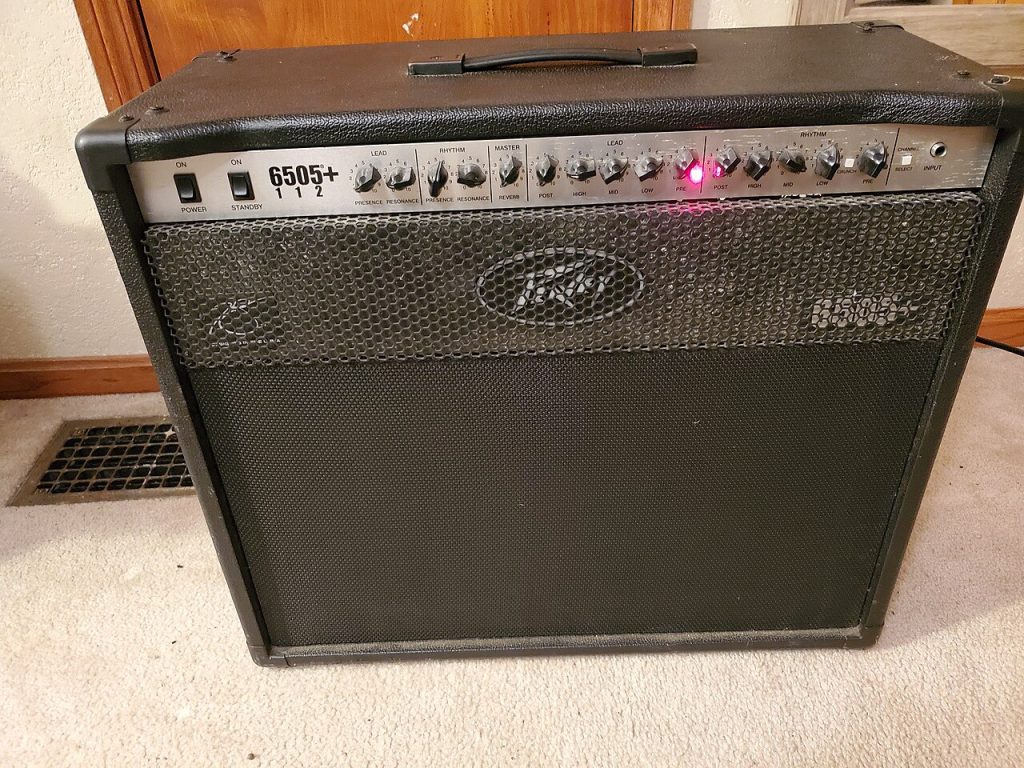
The affordable powerhouse that conquered extreme metal.
Eddie Van Halen’s signature Peavey 5150 became the secret weapon of extreme metal’s underground explosion. Despite being designed for arena rock, the amplifier’s two-channel design and aggressive preamp circuit proved perfect for death metal’s crushing brutality and black metal’s raw intensity. The 5150’s affordability compared to boutique alternatives made high-gain tone accessible to bedroom producers and touring bands alike.
The amplifier’s natural midrange scoop and compressed sustain characteristics create that instantly recognizable “wall of sound” effect. Bands across every extreme metal subgenre adopted the 5150/6505 (later renamed due to trademark issues) as their sonic foundation. The amplifier’s reliability under brutal touring conditions earned it legendary status among working musicians.
Modern 6505 models maintain the original’s core character while adding features like additional channels and improved clean tones. At around $800-1,200, the 6505 series provides professional-grade metal tone at prices that don’t require selling organs on the black market.
3. Orange Rockerverb
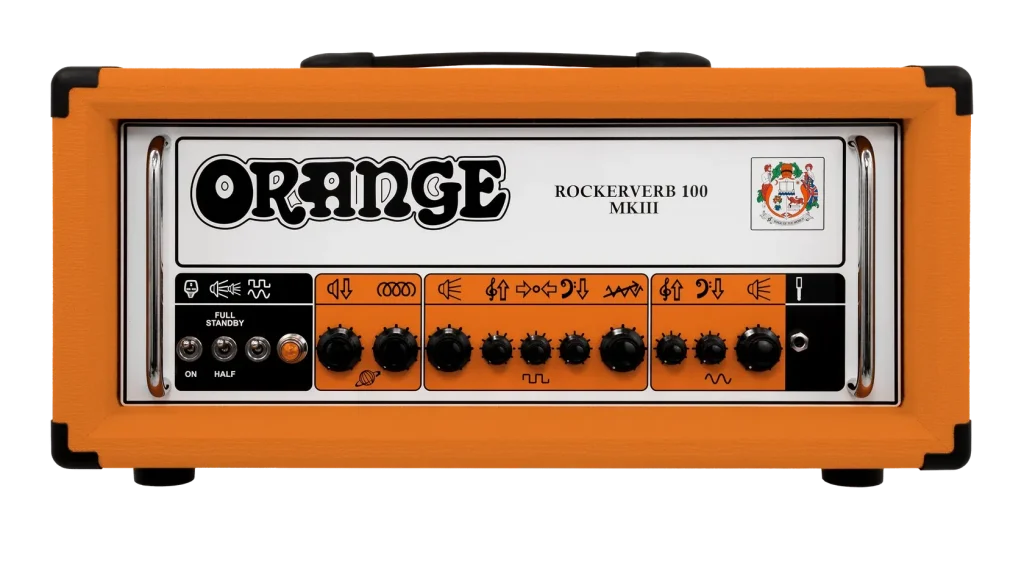
British warmth meets modern metal aggression.
Orange’s Rockerverb series bridges vintage British tone with contemporary metal demands. The amplifier’s EL34-powered warmth and natural tube compression create a distinctly musical character that stands apart from sterile modern designs. The Rockerverb’s organic overdrive characteristics make single notes sing while maintaining enough punch for rhythm work.
The amplifier’s two-channel design keeps things simple while providing enough versatility for most musical situations. Channel switching via footswitch allows seamless transitions between chimey cleans and saturated distortion. The Rockerverb’s built-in effects loop and comprehensive tone controls address modern connectivity needs without overcomplicating the signal path.
Orange’s distinctive visual design makes the Rockerverb instantly recognizable on stage, but the amplifier’s tone quality backs up its striking appearance. The Rockerverb proves that British warmth and modern metal aggression aren’t mutually exclusive concepts.
2. ENGL Powerball
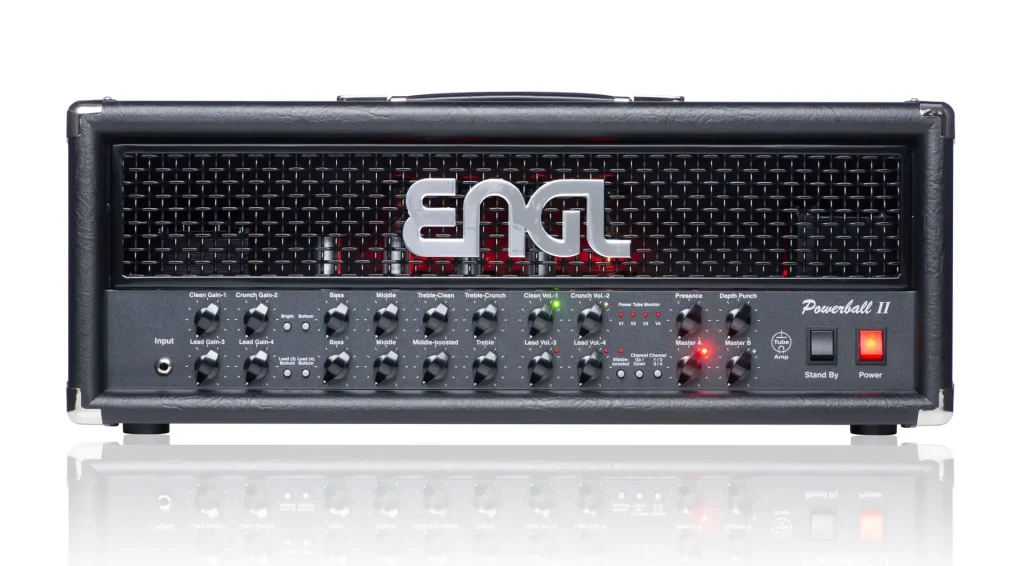
The German precision machine built for extreme metal.
ENGL’s Powerball delivers the surgical precision that modern extreme metal demands. Four independent channels provide everything from crystalline cleans to face-melting high-gain, each optimized for specific musical applications. The amplifier’s German engineering heritage shows in its meticulous attention to detail and bulletproof construction quality.
The Powerball’s high-gain channels maintain note definition even at extreme settings, making it ideal for technical death metal’s complex arrangements and progressive metal’s intricate compositions. The amplifier’s built-in noise gate eliminates unwanted feedback without affecting sustain or dynamics. MIDI switching capabilities make the Powerball perfect for modern metal’s demanding live requirements.
Channel-specific effects loops and comprehensive routing options address every connectivity scenario without requiring external switching systems. The Powerball’s professional features and German build quality justify its premium price point for serious players who demand the ultimate in versatility and reliability.
1. Blackstar HT Club 40
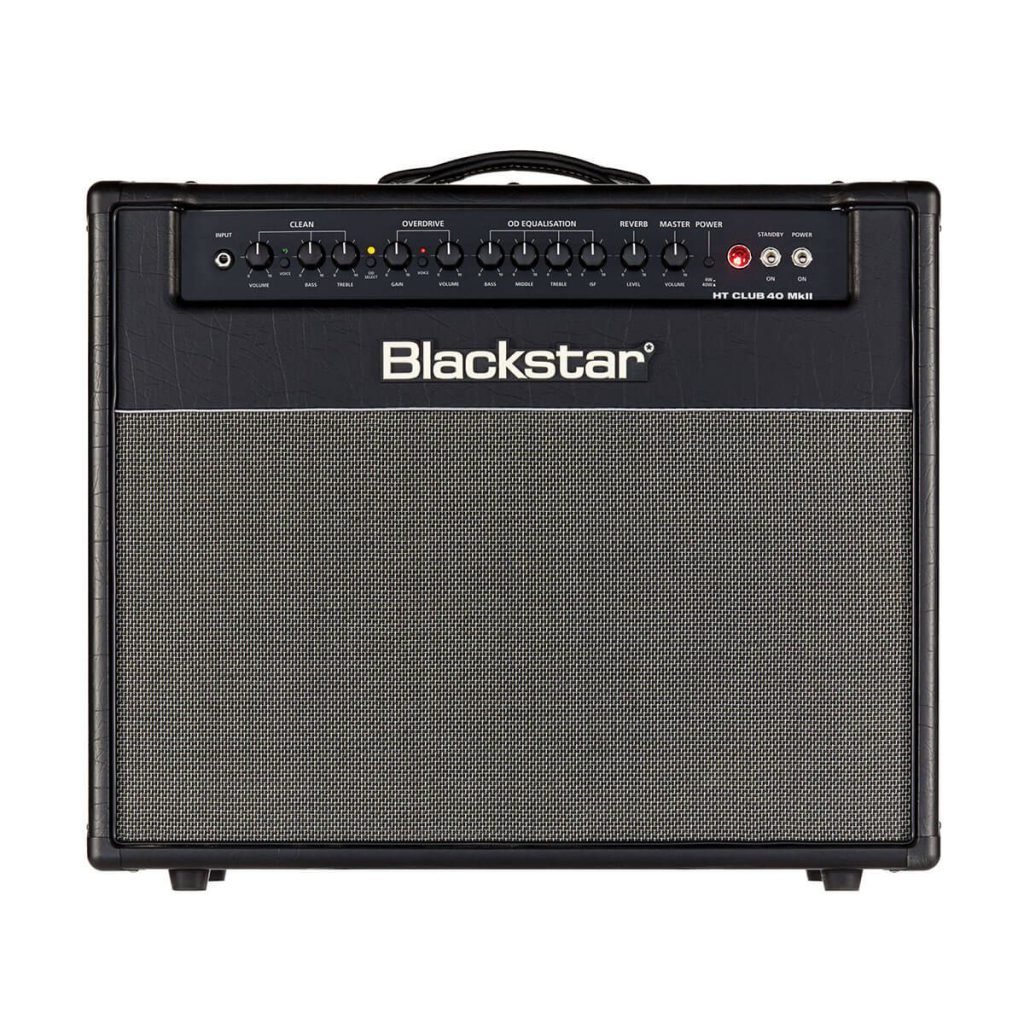
The versatile newcomer that punches above its weight class.
Blackstar’s HT Club 40 proves that exceptional metal tone doesn’t require mortgage-threatening price tags. The amplifier’s two-channel design and ISF (Infinite Shape Feature) control allow seamless blending between American and British tonal characteristics. That flexibility makes the HT Club 40 suitable for everything from vintage-inspired doom to modern progressive metal.
The amplifier’s tube-driven distortion maintains warmth and musicality even at high-gain settings. The ISF control acts like a sonic passport, allowing travel between Marshall-style midrange bite and Mesa-inspired scooped aggression with a simple knob turn. The HT Club 40’s effects loop and footswitch compatibility address modern connectivity needs without breaking the bank.
At approximately $600-800, the HT Club 40 delivers professional-grade features and tone quality that embarrass amplifiers costing twice as much. The amplifier proves that innovation and affordability aren’t mutually exclusive in the modern amplifier market.




